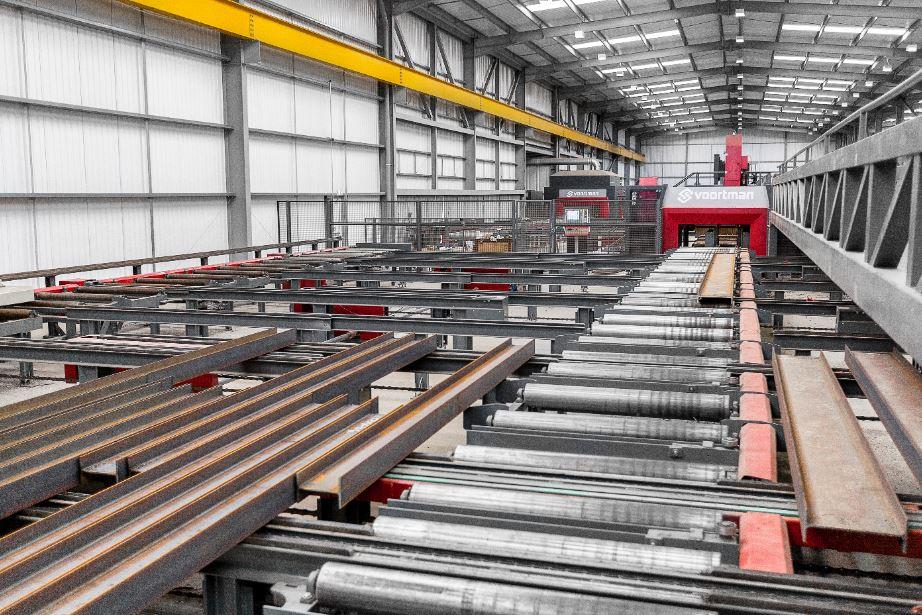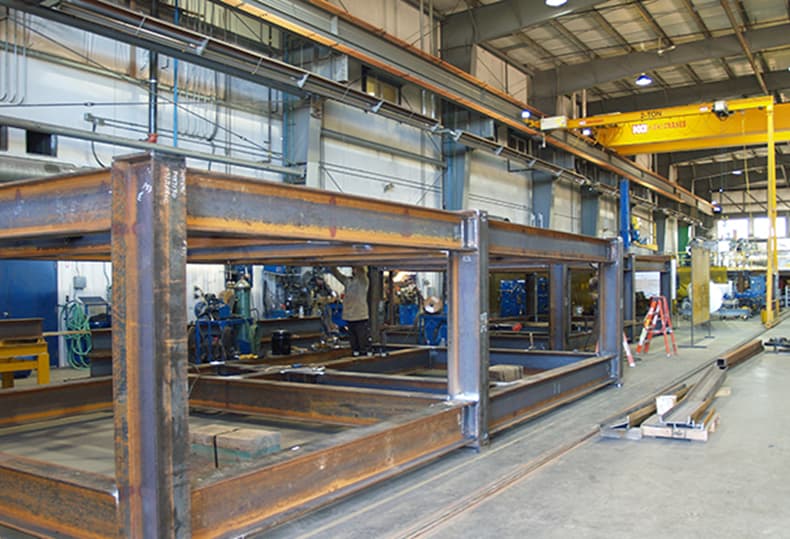Comprehensive Analysis of Cutting-Edge Techniques in Steel Fabrication Market
As the steel fabrication market continues to progress, the assimilation of cutting-edge methods has ended up being crucial for staying competitive and satisfying the demands of contemporary production criteria. In this vibrant sector where modern technology plays a pivotal role, understanding the nuances of these advanced methods is not simply a choice however a requirement for those looking to create in advance in the ever-evolving globe of steel construction.
Laser Cutting Improvements
In the world of steel construction, laser cutting developments have transformed the precision and efficiency of metal shaping processes. By harnessing the power of focused laser light beams, suppliers can currently achieve exceptional levels of accuracy when reducing via numerous kinds of metals. This technology makes it possible for detailed layouts to be carried out with very little material wastefulness, making it an affordable option for markets needing high precision components.
Among the key advantages of laser cutting is its capacity to take care of a variety of products, including stainless-steel, light weight aluminum, and carbon steel, with ease. The process creates tidy, burr-free sides, eliminating the need for additional ending up actions. Furthermore, the non-contact nature of laser reducing minimizes the threat of material contamination, causing better end products.
In addition, laser reducing devices can be configured to make swift, exact cuts, substantially lowering production time compared to standard reducing approaches. This speed and accuracy make laser reducing especially appropriate for mass manufacturing settings where effectiveness is paramount. As modern technology remains to advancement, laser cutting is poised to play a progressively vital role in the steel manufacture sector.

CNC Machining Innovations
The development of CNC machining innovations has actually ushered in a new age of precision and performance in the steel fabrication industry. Computer System Numerical Control (CNC) devices have actually reinvented steel construction by using unequaled accuracy and repeatability in the manufacturing procedure. steel fixing. One of the key advancements in CNC machining is the integration of innovative software systems that make it possible for real-time surveillance and changes, leading to enhanced performance and quality assurance
Additionally, the advancement of multi-axis CNC devices has permitted for the fabrication of complex steel components with elaborate designs that were previously testing to generate. These equipments can execute a wide variety of machining operations, including milling, drilling, transforming, and grinding, all with high degrees of precision.
Furthermore, the consolidation of automation and robotics in CNC machining has streamlined manufacturing procedures, decreased lead times, and minimized the margin of mistake. This combination of advanced technologies not just enhances effectiveness but additionally makes certain constant quality throughout all produced steel parts. To conclude, CNC machining technologies continue to drive advancements in the steel manufacture market, setting brand-new standards for accuracy and efficiency.
Automated Welding Technologies
Automated welding technologies have actually reinvented the steel fabrication sector, improving performance and precision in the welding procedure. These innovative technologies use computer-controlled systems to automate the welding process, causing higher efficiency degrees and enhanced weld top quality. One of the vital benefits of automated welding is the capacity to carry out intricate welds with consistent precision, reducing the probability of mistakes and rework.
Robot welding systems go to the leading edge of automated welding modern technologies, offering unmatched speed and precision. These systems can take care of a vast array of welding jobs, from easy to complex, effortlessly (steel fixing). By utilizing sophisticated sensing units and software program, robotic welders can adapt to variations in product and joint geometry, making certain an uniform and reputable weld
In addition, automated welding technologies improve work environment security by decreasing the direct exposure of human welders to hazardous fumes and intense warm. As the steel construction sector remains to advance, incorporating automated welding technologies will be vital for business seeking to remain affordable and fulfill the expanding needs web link for high-grade bonded items.
Robotics Assimilation in Manufacture
Making use of robot systems in manufacture procedures has actually come to be a crucial method for boosting performance and accuracy in contemporary manufacturing atmospheres. Robotics integration in steel fabrication offers a myriad of benefits, consisting of raised performance, enhanced quality assurance, and enhanced safety measures. These innovative robotic systems are geared up with sophisticated sensors and shows capabilities, permitting them to execute detailed tasks with a high level of accuracy and repeatability.
Among the vital benefits of robotics assimilation in steel fabrication is the capability to automate recurring tasks, such as material handling, reducing, welding, and setting up processes. This not only accelerates manufacturing cycles however also reduces the threat of visit their website human error, leading to greater general item high quality. Additionally, robotics can operate 24/7, significantly enhancing production output and conference tight job deadlines.

3D Printing in Steel Production
Having actually revolutionized the steel construction sector via robotics integration, the blossoming expedition of 3D printing in steel production is poised to further development the world of modern-day manufacturing techniques. 3D printing, likewise referred to as additive production, supplies unprecedented design flexibility and complexity, allowing the production of detailed steel frameworks that were previously unattainable with standard production approaches. By making use of computer-aided design (CAD) software, producers can exactly manage the layer-by-layer deposition of steel material, resulting in get rid of enhanced performances and geometries.
One of the essential advantages of 3D printing in steel manufacturing is its ability to reduce material waste significantly. Unlike subtractive manufacturing procedures where excess product is cut away, 3D printing only utilizes the required amount of steel needed for the last component. This effectiveness not only leads to cost financial savings yet likewise lines up with sustainable production techniques by lessening environmental impact.
Moreover, 3D printing makes it possible for quick prototyping and modification, enabling the manufacturing of little batches of complex steel parts with short lead times. As the modern technology proceeds to mature and become extra easily accessible, its integration right into mainstream steel construction processes is anticipated to drive advancement and efficiency throughout the industry.
Conclusion
Finally, the steel fabrication industry has seen considerable improvements in strategies such as laser cutting, CNC machining, automated welding, robotics assimilation, and 3D printing. These cutting-edge technologies have transformed the method steel items are produced, causing boosted accuracy, cost-effectiveness, and effectiveness. Continued financial investment in these cutting-edge strategies is critical for the sector to remain competitive and satisfy the demands of modern production procedures.
As the steel construction market continues to develop, the integration of cutting-edge techniques has actually ended up being vital for staying competitive and fulfilling the needs of contemporary manufacturing criteria.One of the crucial advantages of laser cutting is its ability to take care of a large variety of materials, consisting of stainless steel, aluminum, and carbon steel, with ease.Automated welding modern technologies have actually transformed the steel fabrication sector, improving efficiency and accuracy in the welding process.Having actually transformed the steel fabrication sector through robotics assimilation, the blossoming exploration of 3D printing in steel production is poised to more advancement the world of contemporary production methods.In conclusion, the steel construction industry has actually seen significant websites improvements in techniques such as laser cutting, CNC machining, automated welding, robotics combination, and 3D printing.